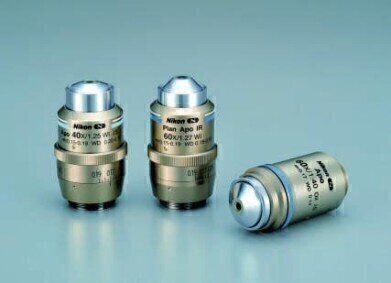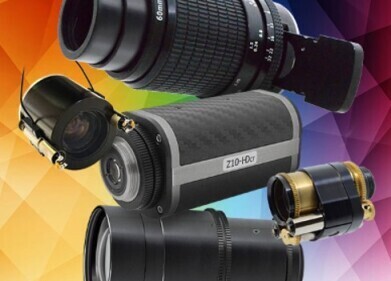Microscopy & microtechniques
High Performance Objectives Optimised for Live Cell Imaging
Feb 11 2010
Nikon has launched its latest high performance, high numerical aperture (N.A.) objectives for use in biological applications. Featuring the highest ever N.A.s for water immersion objectives (1.27 and 1.25), these new objectives employ Nikon’s unique, ultra low refractive index Nano crystal coat, and are optimised for live cell imaging, providing the highest transmission at a broad range of wavelengths. This results in high contrast image acquisition, with faster image capture times at lower excitation levels, achieving less photobleaching and minimising damage to live cells, allowing longer-term observation. Comprising the CFI Plan Apo IR 60XWI and Lambda S series – CFI Apo 40XWIS, CFI Apo 60XHS and CFI Apo LWD 40XWIS, the new objectives feature high optical performance across the widest spectral wavelength with high chromatic corrections for sharp contrast imaging.
Nikon’s exclusive Nano crystal coat technology employs multiple layers of extra low refractive index nano particles that virtually eliminate internal lens element reflections across a wide range of wavelengths extending from the ultraviolet to the near-infrared. It is particularly effective in reducing stray light reflections and flare in high angle (large N.A.) lenses. The Lambda S objectives are optimised for spectral imaging with the ability to allow confocal imaging of multi-probe specimens. Advanced optical design and improvements in performance enable the CFI Apo 40XWIS, in particular, to correct chromatic aberration from 405nm to 850nm. CFI Plan Apo IR 60XWI corrects from the visible range to 1064nm, facilitating infrared light imaging techniques, such as multiphoton excitation and laser tweezers. In addition, CFI Apo LWD 40XWIS features a long working distance of 0.6mm for deep image capture.
“Thanks to recent developments of new microscope technologies such as spectral imaging, fluorescence observation with the use of multiple wavelengths of light and near-infrared light imaging applications, there is an increased need to observe live cells for longer periods of time while minimising damage caused by the excitation light,” commented Stan Schwartz, vice president, Nikon Instruments, Inc. “We believe these four types of objectives will significantly contribute to live cell imaging studies that are carried out in research institutes of biology and medicine as well as in core laboratories and universities.”
Digital Edition
Lab Asia Dec 2025
December 2025
Chromatography Articles- Cutting-edge sample preparation tools help laboratories to stay ahead of the curveMass Spectrometry & Spectroscopy Articles- Unlocking the complexity of metabolomics: Pushi...
View all digital editions
Events
Jan 21 2026 Tokyo, Japan
Jan 28 2026 Tokyo, Japan
Jan 29 2026 New Delhi, India
Feb 07 2026 Boston, MA, USA
Asia Pharma Expo/Asia Lab Expo
Feb 12 2026 Dhaka, Bangladesh

.jpg)
-(2).jpg)
















